AI Marketing and the Road to AGI: What the Next Two Years Hold
As someone deeply passionate about the evolution of artificial intelligence and its impact on marketing, I recently had the privilege to dive into a compelling keynote by Paul Roetzer at MAICON 2024. This talk, titled The Road to AGI, offers a sweeping view of where AI marketing is headed and what it means for businesses, marketers, and society at large over the next two years. Paul’s insights provide a rare glimpse into the rapidly evolving world of AI — from the foundational large language models like ChatGPT to the imminent arrival of truly intelligent AI agents and multimodal models that promise to revolutionize how we interact with technology and data.
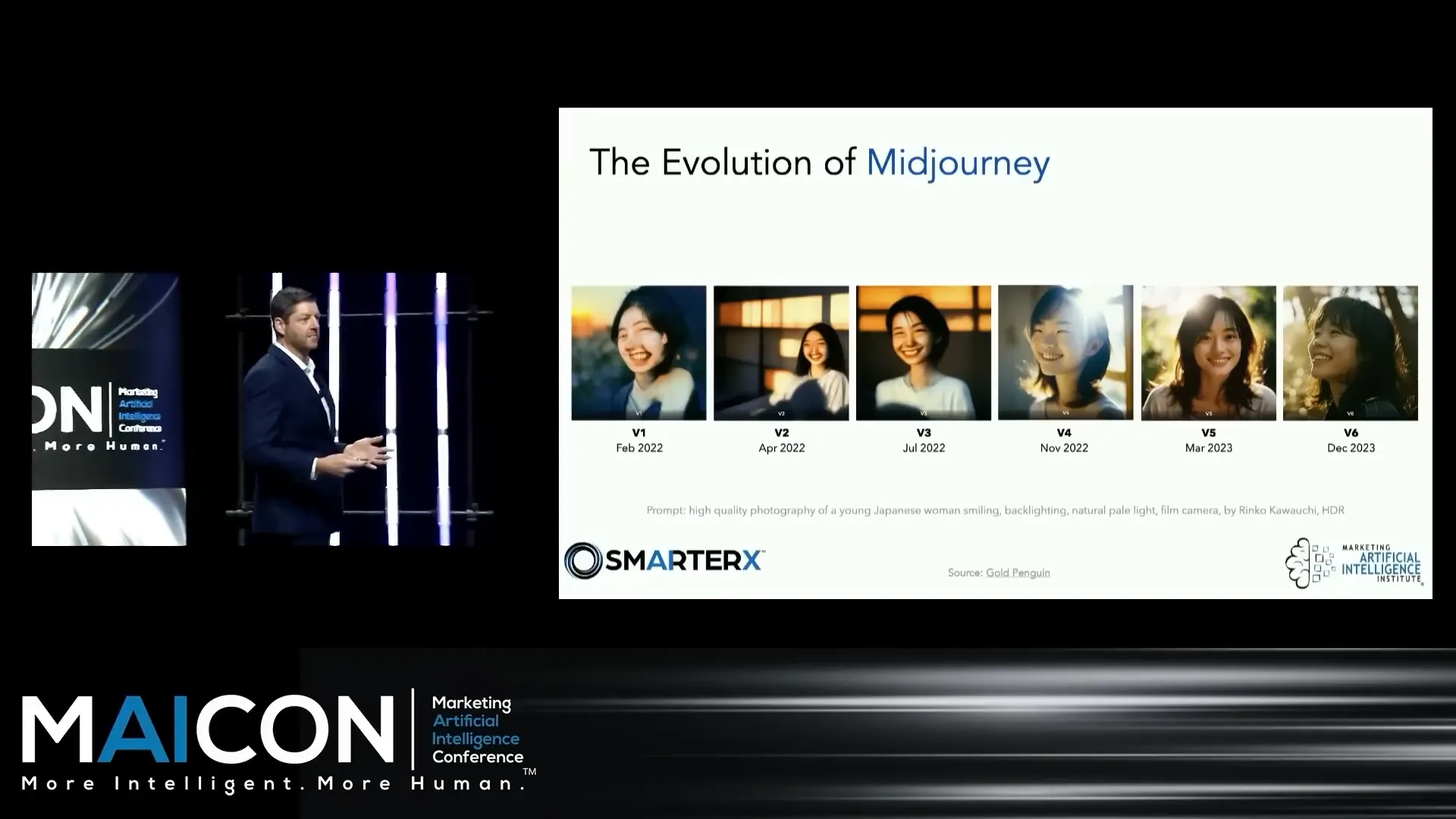
Table of Contents
- Understanding the Current AI Landscape
- AI Agents: From Output to Action
- The Quest for General Intelligence: What is AGI?
- Financial Investment and AI Progression
- The Near-Term Future: What to Expect by 2025 and Beyond
- Implications for Marketers
- Human vs. Machine: What AI Cannot Replace
- Preparing for the AI Marketing Revolution
- Frequently Asked Questions (FAQ)
Understanding the Current AI Landscape
Let’s start by setting the stage. Since the launch of ChatGPT in 2022, large language models (LLMs) have been the backbone of AI applications in marketing and beyond. But as Paul emphasizes, what we have today is just the foundation. These models began as simple text-in, text-out systems. Today, they are evolving into multimodal powerhouses capable of understanding and generating images, video, audio, and even code.
Paul calls this the “dumbest form of AI we will ever have in human history.” It’s a powerful reminder that the current AI capabilities, while impressive, are just the beginning. The rapid and exponential growth in AI technology means tomorrow’s models will be smarter, more versatile, and far more generally capable.
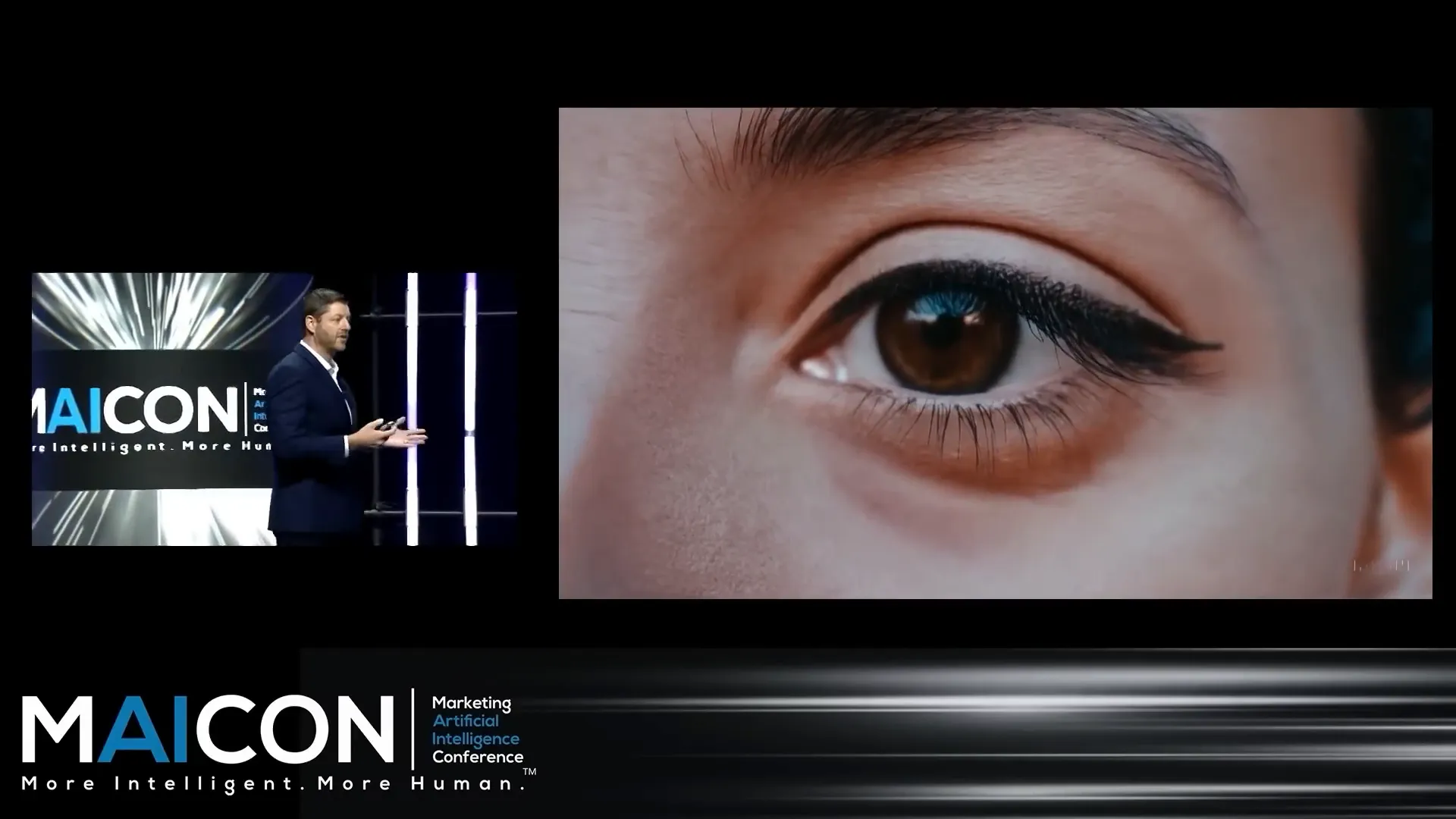
The Rise of Multimodal AI
One of the most exciting developments Paul highlights is the emergence of multimodal AI. This means AI systems that can simultaneously process and generate multiple types of data: text, images, video, audio, and code. Google’s Gemini model and OpenAI’s upcoming Sora video generation technology are prime examples. These models promise not only to create stunning visuals but also to generate high-definition videos with frame consistency — a technical feat that has eluded AI until now.
Imagine a future where marketers can generate complete video campaigns, audio ads, and interactive content simply by providing a prompt — no need for expensive production teams or weeks of editing. This will dramatically accelerate content creation and open new creative horizons in AI marketing.
AI Agents: From Output to Action
Another major leap Paul discusses is the transition from AI as a tool that produces outputs to AI as an agent that can take autonomous actions on our behalf. Companies like Salesforce (with Agent Force) and HubSpot (with agent.ai) are already building AI agents designed to execute complex workflows, manage data, and even make decisions.
Unlike current chatbots that respond with text or suggestions, these agents can handle multi-step processes reliably. For marketers, this means AI could soon manage entire campaigns, analyze customer data, optimize budgets, and even handle customer interactions — all with minimal human intervention. The promise is immense, but Paul cautions that while demos are impressive, reliable AI agents are still in the early stages. We might see widespread adoption in vertical-specific domains first, before it becomes mainstream.
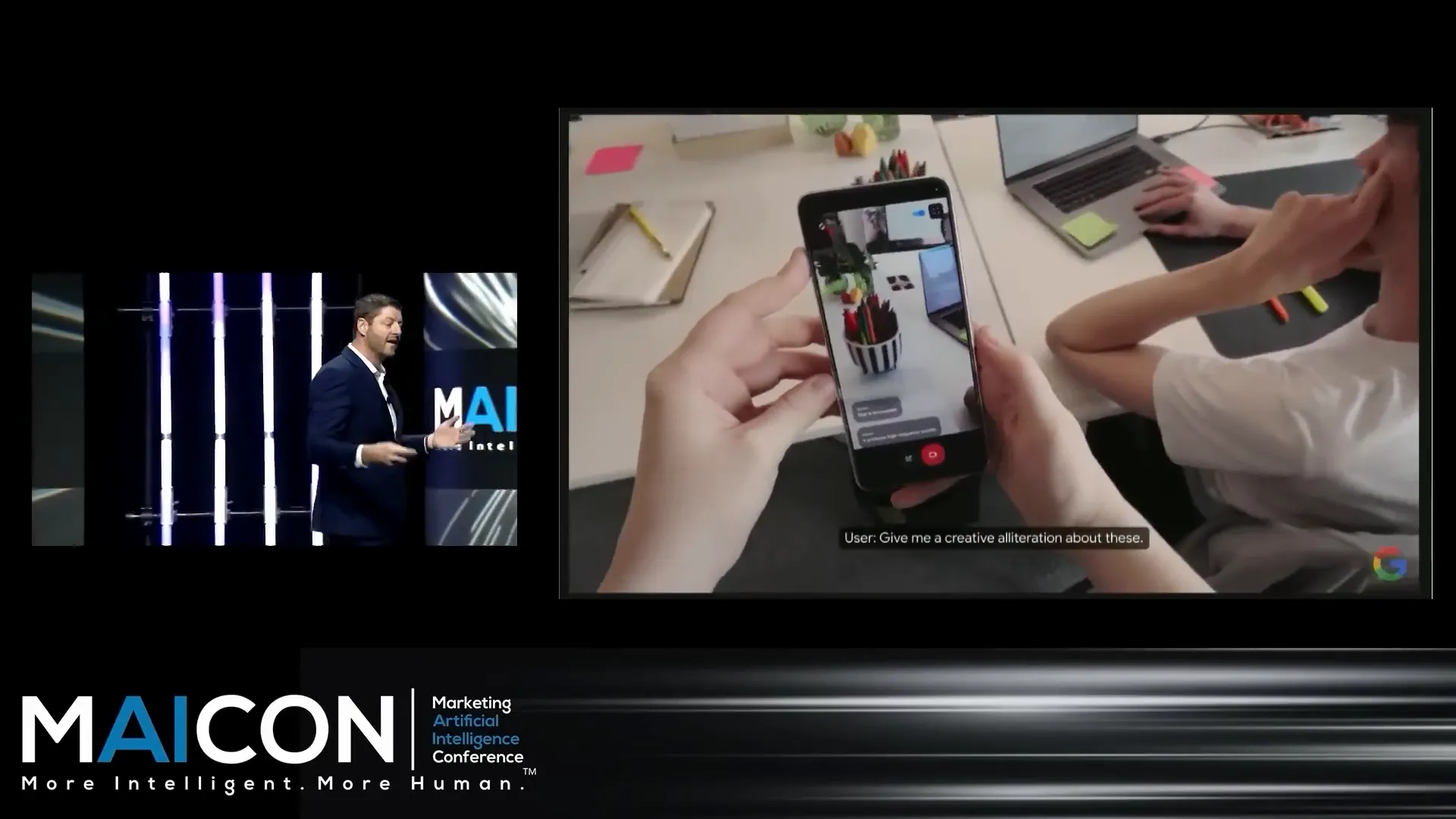
Intelligent Voice Assistants and AI Vision
Voice assistants are also on the cusp of a breakthrough. Apple recently previewed new capabilities that will make voice-based AI assistants truly intelligent and usable. Coupled with AI vision, as seen in Google’s Project Astra and smart glasses like Google Glass and Meta’s Ray-Ban glasses, the future points to AI that understands the world around us visually and verbally.
For marketing, this means consumers will interact with brands in more natural, immersive ways — through voice commands, AR experiences, and AI-powered devices that understand context in real-time.
The Quest for General Intelligence: What is AGI?
At the heart of Paul’s keynote is the concept of Artificial General Intelligence (AGI). Unlike narrow AI that excels at specific tasks, AGI is envisioned as an AI system capable of performing any intellectual task a human can do, with the ability to transfer knowledge across domains.
Paul breaks down the debate around AGI definitions:
- OpenAI: AI systems generally smarter than humans.
- Google DeepMind: AI as capable as humans at most cognitive tasks.
- Elon Musk: AI smarter than the smartest human (often optimistic on timelines).
Paul synthesizes these views into a working definition: AGI is AI that can outperform the average human at most cognitive tasks. This distinction is crucial because it shifts the focus from mythical superintelligence to practical, impactful AI that can handle the bulk of everyday work.
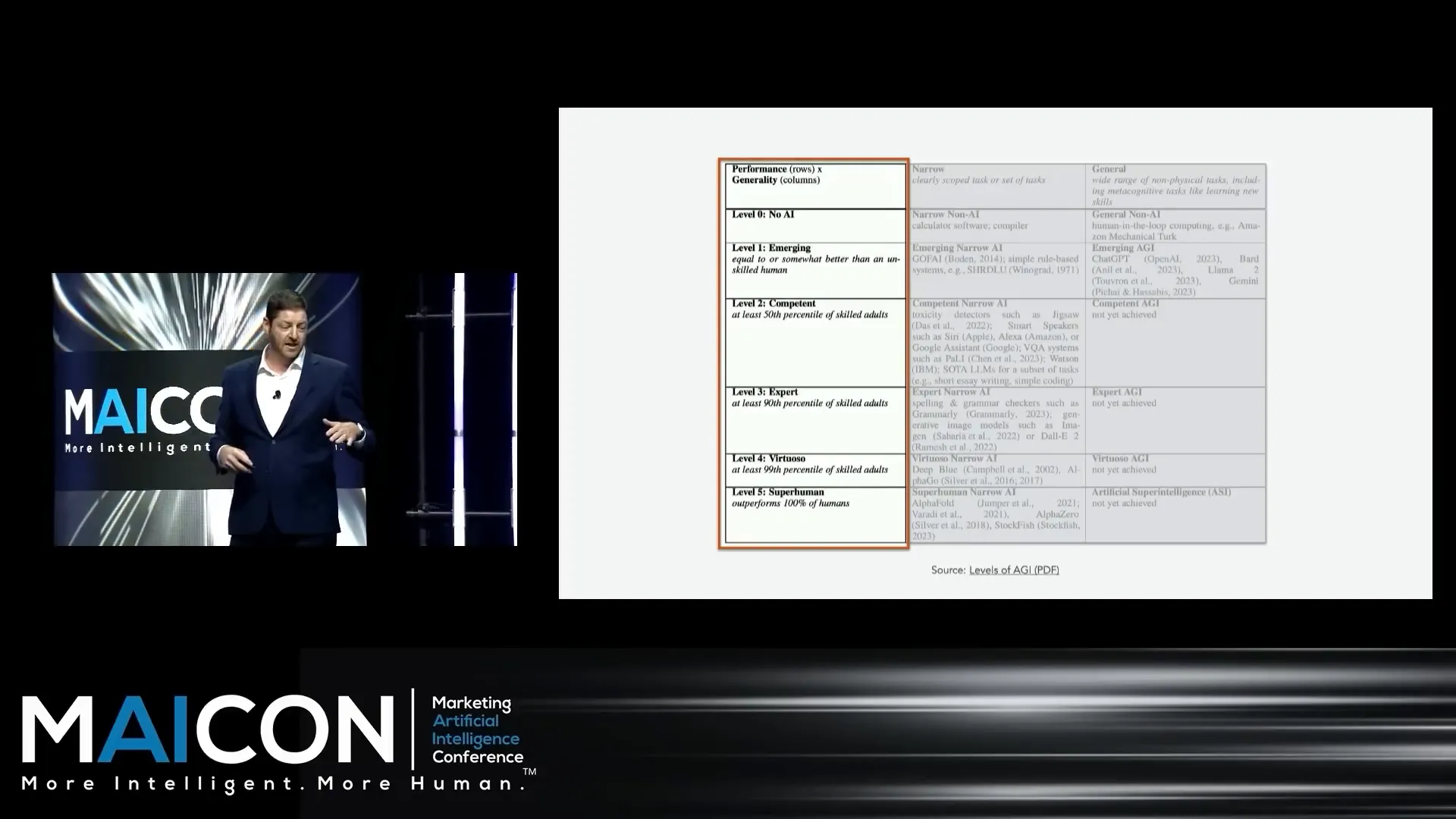
Levels of AGI Performance
Google’s research paper on "Levels of AGI" presents a sliding scale between performance and generality:
- Level 1: Equal or better than an unskilled human at a task.
- Level 2: Competent, at the 50th percentile of skilled adults.
- Level 3: Expert, at the 90th percentile.
- Level 4: Virtuoso, at the 99th percentile.
- Level 5: Superhuman intelligence.
Narrow AI tools like Grammarly fit at Level 3 for grammar correction but lack generality. True AGI would be an AI like GPT-6, capable of expert-level performance across virtually all cognitive tasks.
Financial Investment and AI Progression
Dario Amodei, CEO of Anthropic and former OpenAI leader, offers an insightful way to think about AI development: the amount spent on training correlates with intelligence level.
- Training GPT-4 cost between $60-$100 million, roughly equivalent to a college freshman’s intelligence level.
- Models costing $500 million to $1 billion, such as Google’s Gemini 2, are expected soon.
- Within two years, $10 billion training runs could produce AI at a top graduate student level (Level 3 or 4).
- Eventually, $100 billion training runs could yield Nobel Prize-level AI intelligence.
This investment trajectory aligns with the aggressive timelines some companies have set for achieving AGI, including OpenAI’s mission to build AGI to benefit humanity.
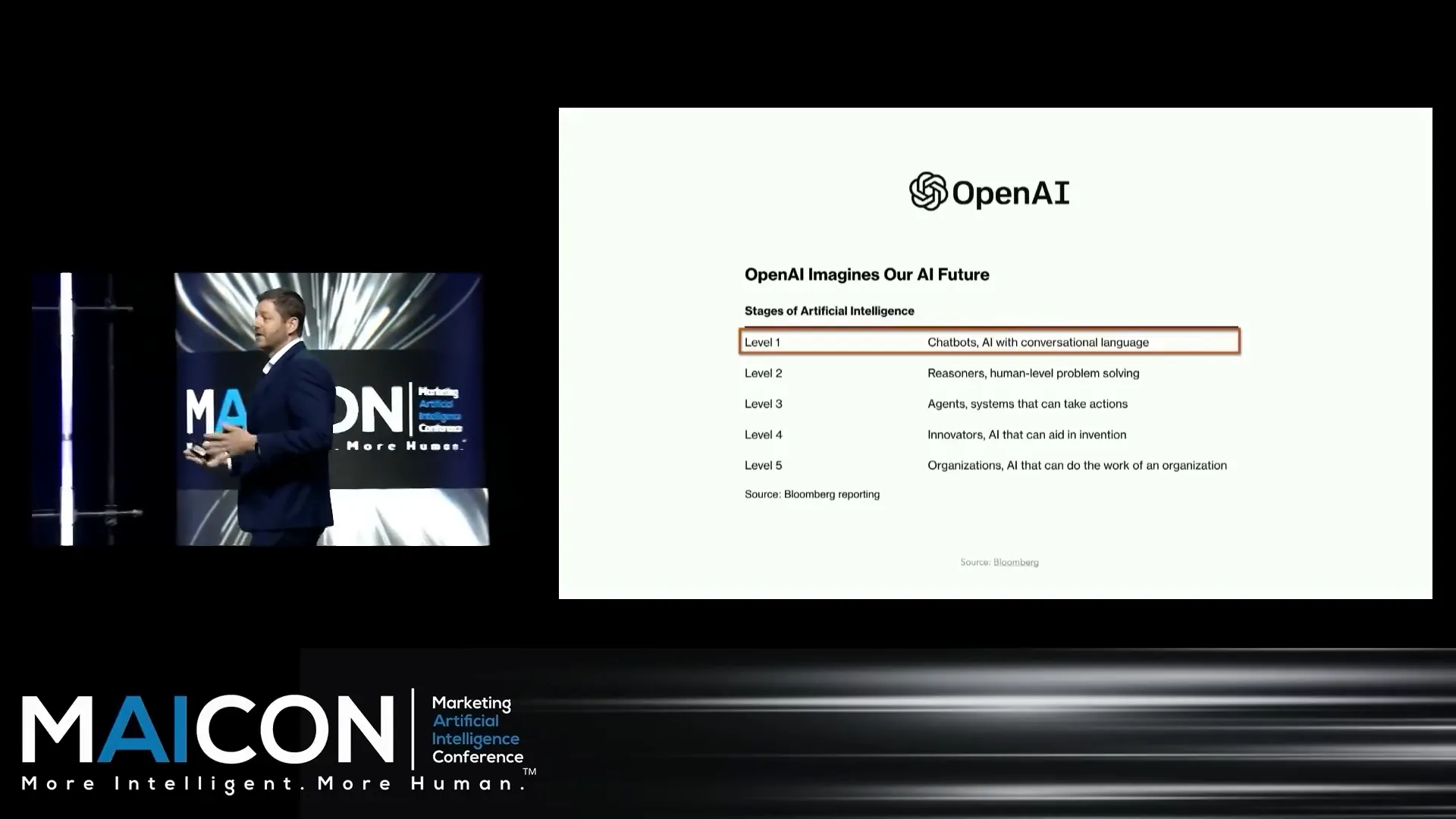
The Near-Term Future: What to Expect by 2025 and Beyond
Paul lays out a timeline of what’s coming in AI marketing and the broader AI ecosystem over the next two years:
- 2024: Smarter large language models with early forms of human-like reasoning, enhanced multi-modality, and better planning and decision-making capabilities.
- Late 2024 to 2025: True multi-modal AI models built from the ground up, not patched on top of language models.
- Smaller, efficient models will run on devices, delivering AI intelligence directly to phones and everyday gadgets.
- Advanced voice interaction could revolutionize how we communicate with technology, akin to the impact of touchscreens on smartphones.
- AI agents will become reliable within verticals, capable of executing complex multi-step processes.
- Early forms of AGI may emerge, enabling new scientific discoveries and business paradigms.
Paul predicts the first billion-dollar revenue company run by a single person and a team of AI agents could appear as early as next year, signaling a seismic shift in business models and productivity.
Implications for Marketers
For those of us in marketing, these advances mean profound change. Paul recounts a telling quote from Sam Altman, CEO of OpenAI, explaining that AGI could automate up to 95% of marketers’ jobs — perfectly and for free. This stark reality might sound alarming, but it also opens doors to unimaginable creativity and innovation.
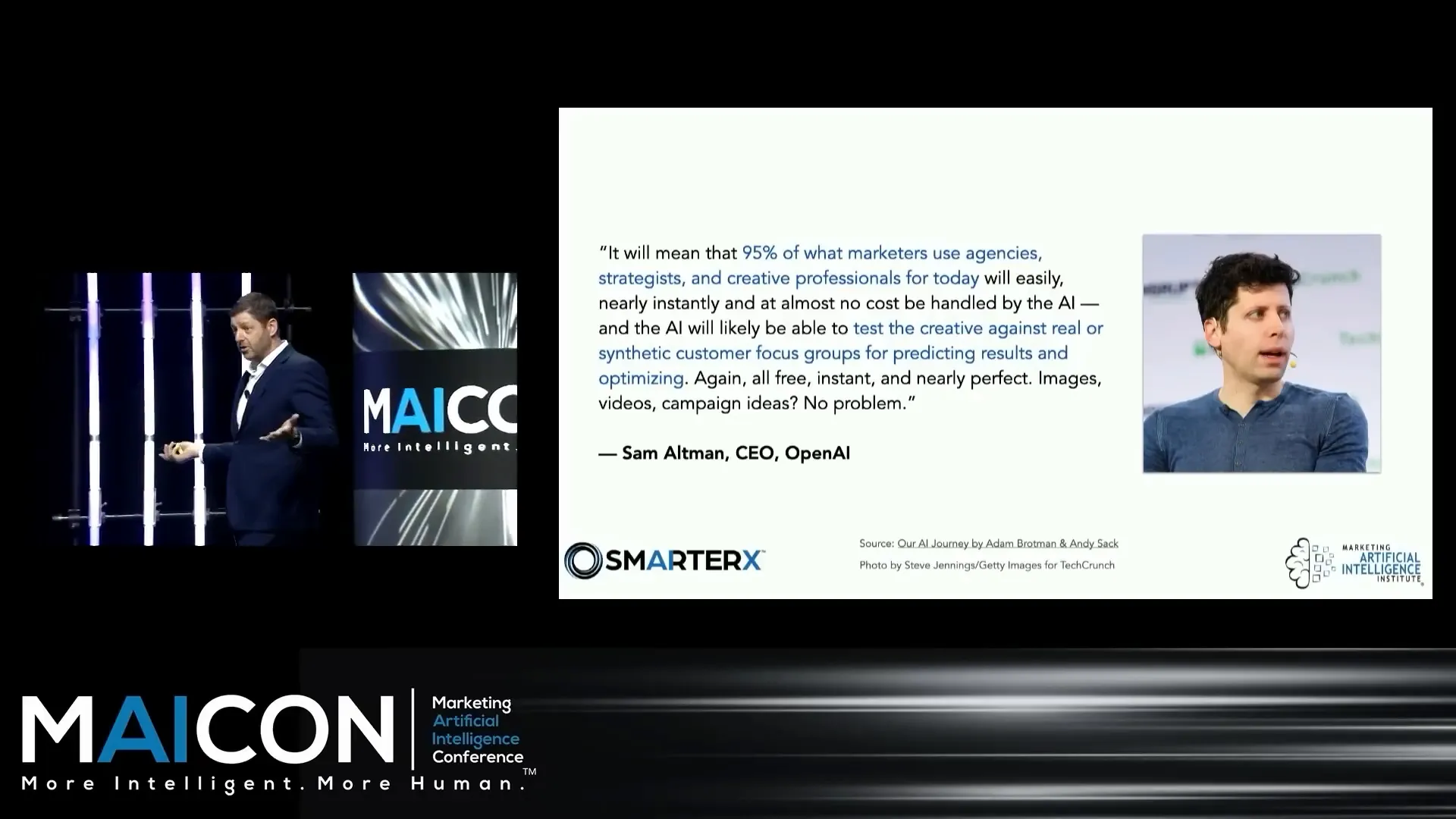
Adapting to AI Marketing’s New Reality
Here’s what marketers need to keep in mind:
- AI literacy is essential: Understanding AI’s capabilities and limitations is critical to staying competitive.
- Democratizing AI knowledge: Teams and organizations must build collective competency to leverage AI effectively.
- Task-level exposure: Many marketing tasks are already exposed to AI automation; using tools like Jobs GPT can help identify what can be delegated to AI agents.
- Consumer behavior will shift: Expect more AI agents acting as intermediaries in buying journeys, possibly making up over 50% of website visitors in a few years.
- New roles will emerge: While some jobs may be displaced, new roles focused on managing, training, and collaborating with AI will arise.
Human vs. Machine: What AI Cannot Replace
One of the most profound insights from Paul’s talk is the difference between AI doing something and AI simulating it. Machines won’t truly feel empathy or experience love, instinct, or intuition. However, they can simulate empathy perfectly — sometimes better than many humans.
This distinction suggests that the uniquely human traits like imagination, creativity, and emotional intelligence will remain the frontier where humans excel. AI marketing should focus on augmenting these strengths rather than competing with AI on purely cognitive tasks.
Preparing for the AI Marketing Revolution
To wrap up, the AI marketing landscape is evolving faster than most expect. Paul’s call to action is clear:
- Accelerate AI literacy: Don’t silo AI knowledge; share it widely within your organization.
- Assess AI’s impact: Use data and tools to understand which tasks AI can enhance or replace.
- Collaborate and share insights: Join communities, councils, and podcasts dedicated to AI to stay ahead.
Paul’s final message resonates deeply with me: AI is an unprecedented opportunity to unlock human potential, not replace it. If we approach this transformation intentionally, responsibly, and with a human-centered mindset, the future of AI marketing — and business overall — can be both more intelligent and more human.
As someone who’s been tracking AI marketing trends closely, I’m excited and cautiously optimistic. The AI revolution is already here, and those prepared to lead will shape the future.
Frequently Asked Questions (FAQ)
What is AGI and how does it differ from current AI?
AGI, or Artificial General Intelligence, refers to AI systems capable of performing any intellectual task a human can do, with the ability to transfer knowledge across tasks. Current AI is narrow, excelling at specific tasks but lacking generality.
How soon will AI agents become reliable and widely used?
AI agents that can autonomously perform complex multi-step tasks are expected to become reliable within vertical industries over the next 1-2 years. Widespread adoption across all sectors may take longer.
What does AI mean for jobs in marketing?
AI will automate many routine marketing tasks, potentially up to 95%. However, new roles focusing on AI management, strategy, and creative collaboration will emerge. Marketers should focus on uniquely human skills.
How can marketers prepare for the AI transformation?
Marketers should build AI literacy, democratize knowledge across teams, assess task-level AI exposure, and engage with AI-focused communities to stay informed and competitive.
Will AI replace human empathy and creativity?
AI can simulate empathy and creativity but does not truly experience these emotions. Human imagination, intuition, and emotional intelligence remain irreplaceable and critical for future success.
